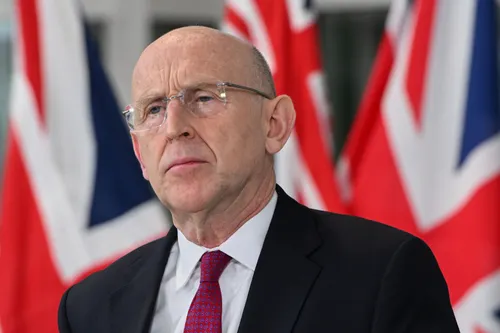Europe Arrives at COP11 Divided and Defensive as Jobs, Industry and Regional Economies Hang in the Balance
The EU will not be able to participate in the vote during the World Health Organisation’s 11th Conference of the Parties (COP11) under the WHO Framework Convention on Tobacco Control (FCTC) that begins today in Geneva. This is due to the inability of EU countries to reach a common position. Despite numerous attempts before the FCTC, the Danish Presidency of the Council of the EU was unable to bridge the diverse positions of the Member States. A fractured EU mandate, fears of economic shock, and a growing split between health policy idealism and industrial reality frame the opening of the negotiations.
When the Conference opens today in Geneva, the European Union arrives not as a unified global actor but as a bloc deeply divided, cautious, and politically constrained. Some EU Member States want the EU to be a leader in tobacco control while others are more reluctant to go beyond current commitments. Many countries in the South and East of Europe, and Sweden criticize the EU’s proposed taxes increase on tobacco and nicotine products. They argue that the proposal is unscientific, saying it doesn’t sufficiently distinguish between different products or consumption contexts.
For months, the Danish Presidency sought to craft a strong EU negotiating mandate aligned with the WHO Secretariat’s increasingly restrictive direction on tobacco and nicotine. However, Member States could not agree on a common position without risking significant economic harm and provoking open revolt from national governments whose domestic industries stand to lose the most.
The Committee of Permanent Representatives of the Member States to the EU (COREPER) has approved the Danish Presidency’s compromise text on the EU’s position last Friday. The result is a minimalist, defensive, and deeply fragile EU stance that skirts every controversial issue, avoids committing to fiscal or regulatory pathways, and reflects a profound unease inside the Union about the socio-economic consequences of a maximalist approach to nicotine control.
Europe’s silent economic engine: tens of thousands of jobs in the balance
The preservation of jobs, industrial capacity and export-driven economic systems tied to nicotine products are paramount for a considerable number of Member States.
There are significant concerns that high taxes will negatively impact workers in this sector, particularly those companies producing goods affected by extravagant tax regimes, along with related small and medium-sized enterprises (SMEs). Entrepreneurs warn that these additional taxes could lead to higher consumer prices and harm their competitiveness, potentially resulting in widespread unemployment.
Across the EU, the sector supports tens of thousands of skilled, stable jobs. The tobacco and nicotine products industry is a major employer in Europe, a significant exporter, and one of the largest taxpayers. It supports the entire value chain, from agriculture to retail and SMEs. These SMEs are spread across import, wholesale, retail, and some manufacturing and processing. There are hundreds of thousands of small retailers – many of which are micro businesses – and a significant number of small tobacco farms (approximately 15,000) that would also feel the economic impact.
The EC’s proposed regulatory changes could affect a broad base of smaller businesses, not only large tobacco multinationals. According to a Commission impact assessment on EUR-Lex, in 2023, the tobacco industry, under the category of “manufacture of tobacco products,” employed approximately 41,000 people in the EU.
Another Commission Impact Assessment (2025) concerning SMEs in the tobacco value chain estimates that 5,300 SMEs will be “directly affected” by the proposed regulatory changes. These include importers, wholesalers, transporters and farmers.The assessment estimates that there are between 250,000 and 300,000 retail outlets for tobacco products in the EU. Many of these shops are micro or small businesses, particularly dedicated tobacco shops. Additionally, the impact assessment indicates that over 15,000 tobacco farms would be indirectly affected.
Many of these businesses are located in economically sensitive regions where industrial decline has already taken a heavy toll:
- Italy remains one of Europe’s largest hubs for heated tobacco and nicotine pouch production, with several factories in the north and central regions employing thousands.
- Poland hosts major production lines for cigarettes, filters, pouches and packaging material, supporting one of the continent’s largest nicotine-related manufacturing workforces.
- Romania, Greece, Spain and the Czech Republic also maintain substantial industrial, agricultural and processing facilities linked to nicotine and emerging alternatives.
In multiple Member States, these industries are not peripheral—they are anchoring employers, providing workforces with long-term contracts, specialist technical roles, and export-based revenue that feeds directly into regional economies.
Yet the WHO Secretariat has for years signalled its desire for substantial global restrictions on all nicotine products, including:
- dramatically higher taxation,
- stringent limitations on flavours,
- near-prohibitive retail and advertising curbs,
- and severe warnings or plain-pack-like measures for next-generation alternatives.
For countries with major plants, these policies translate not into health improvements but into plant closures, mass redundancies, and the loss of entire industrial ecosystems.
A senior EU diplomat involved in Friday’s COREPER talks said bluntly: “You cannot simply legislate away people’s livelihoods. Some Member States would lose thousands of jobs overnight.” However, although there are short- and medium-term economic risks, policymakers in some European countries argue that reduced tobacco consumption leads to lower healthcare expenditures and fewer years lost to illness, thereby increasing economic productivity. In addition, they believe that tax revenues can be reinvested in prevention or socioeconomic support.
Unity or socioeconomic realism
The Commission insisted that the EU must support “strong, protective language” at COP11.
But when Member State representatives debated the proposed mandate at COREPER last week, it rapidly became clear that:
- There was no agreement on taxation. Several delegations demanded that any fiscal language be removed entirely, noting that the EU’s own Tobacco Excise Directive reform is still stalled due to internal opposition.
- There was no agreement on novel nicotine products. A growing number of governments insist that harm reduction alternatives cannot be regulated identically to cigarettes without triggering unintended public health consequences.
- There was no agreement on maximalist restrictions. Countries with major industrial activity refused outright to endorse WHO recommendations that could shut down their factories.
The EU’s negotiating mandate was progressively stripped of substance until what remained was described by one diplomat as: “The minimum needed to avoid total silence.”
A growing fracture line inside the EU
The negotiations exposed a fault-line now running through the centre of EU policymaking.
Three groups of Member States have emerged:
1. The Maximalist Health Bloc
Led by some Nordic and Western governments and backed by familiar Brussels NGOs, this group advocates strict FCTC alignment, including aggressive tax and regulatory controls on all nicotine.
2. The Pragmatic and Socio-Economic Bloc
Predominantly Central, Eastern and Southern Member States whose domestic industries make maximalist approaches economically unviable. These governments demand recognition of employment, industrial, and regional-development risks.
3. The Transitional Bloc
Countries experimenting with harm-reduction strategies that recognise the difference between cigarettes and alternative products.
These three visions are not always compatible and the Commission, after years of pushing the maximalist line, now confronts the reality that Member States no longer agree with each other or with the WHO.
The WHO’s approach clashes with Europe’s industrial and consumer reality
The WHO FCTC Secretariat has long maintained that all nicotine products should be discouraged through taxation, marketing bans and design limitations.
However, this position sits uneasily with:
- falling smoking rates across the EU;
- the rapid growth of harm-reduction alternatives;
- the evidence that high tax burdens on safer products can push consumers back to cigarettes;
- and the indisputable economic contribution of nicotine-manufacturing industries.
WHO approach does not account for the fact that Europe is not a tobacco-producing region in decline, but a major centre of next-generation product manufacturing—an industry that employs tens of thousands and contributes billions in investment and export revenue.
A Romanian official commented privately: “The WHO has the luxury of ignoring economics. We do not.”
The EU facing a credibility test
The tobacco and new nicotine products industry has a significant economic presence in the EU-27. It contributes to the European Union’s economy by supporting over a million jobs throughout the value chain. This industry creates value, has a substantial impact on GDP, and generates significant public revenue through excise taxes and VAT.
The EU and the WHO should develop their policies based on more comprehensive data and thorough impact assessments before increasing excise taxes. It’s important to combine policy tools like taxation with other strategies, such as education and reformulation, instead of using them in isolation.
Most of the industries involved have undergone significant transformations and made substantial investments over the last decade. They are contributing to the competitiveness, innovation, employment and economy of Europe. A pragmatic, reasonable, predictable excise tax framework and regulation is needed.






















